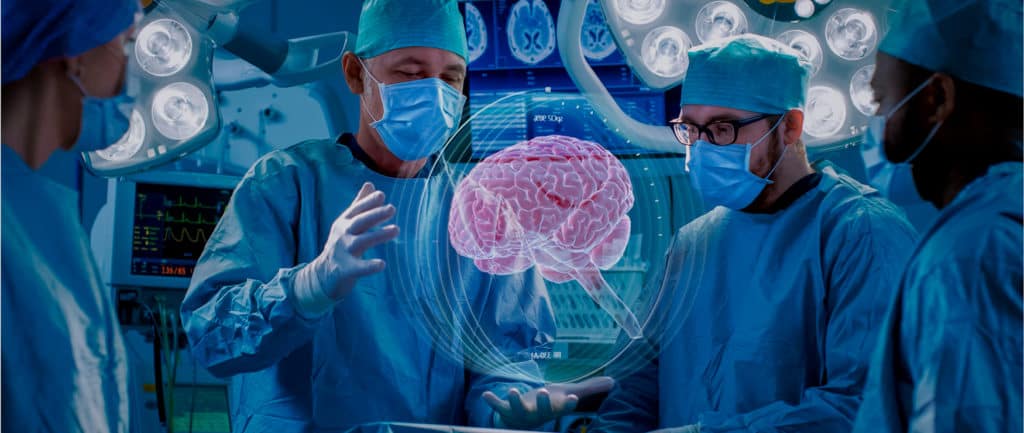EMERGING HEALTHCARE INDUSTRY TRENDS #10: Enhanced Data Visualization Tools
Emerging technologies in AI and machine learning mean that enormous amounts of data are more easily digestible than ever before, and applications of this technology within the healthcare industry has potentially huge implications, from helping with diagnosis to improving surgeon performance. Learn how enhanced data visualization tools are expected to affect the industry in this blog, part 10 in our series on emerging trends to watch out for in healthcare.
What are enhanced data visualization tools?
Healthcare practitioners already have access to a myriad of sensors and other technology that feed them data about a patient’s condition. But with the emergence of AI, the way that information is relayed will allow for more accurate detection of diagnosis and disease. Machine learning will be able to better analyze treatment patterns, identify other similar cases to suggest new research possibilities, and help manage chronic health issues for individuals over time.
THE KEY DRIVING TRENDS ARE:
-Growth of AI & machine learning: As AI data visualization tools grow both stronger and cheaper, there are increased application opportunities for healthcare.
-Mainstreaming of mixed reality: AI and machine learning are becoming increasingly accessible, leading to better data visualization tools as well as augmented reality opportunities in the OR and for medical students.
-FDA Digital Center of Excellence launch: This center, which will be housed within the Center for Devices and Radiological Health (CDRH), will serve as the federal resource for digital health technologies, including VR and augmented reality devices.
Why enhanced data visualization tools matter
Though HCPs have had increased access to data for years now, that hasn’t always directly translated into better-informed decision making — there just isn’t time to pore over all of that raw data. Machine learning and AI will be able to make correlations that HCPs cannot, while at the same time helping providers with improved data visualization tools that let them make better in-the-moment decisions, improving quality of care.
Opportunity: Reducing cognitive load and patient wait times with comprehensive data visualization tools
By curating and aggregating data sets in an easily digestible and action-oriented way, designers can help HCPs make critical decisions in the moment with more focused information. Access to raw data isn’t new, but not having to sift through that raw data is a huge step in reducing overall cognitive load on providers, bringing the most relevant info to the forefront and eliminating the excess.
For example, Philips released a new tool for HCPs for aiding in diagnostic and treatment decisions. By aggregating information in a modular approach that considers users’ needs, information is displayed consistently across apps. This format both increases understanding and reduces cognitive load, allowing HCPs to make faster, better-informed decisions without the strain of raw data overload.
Often siloed and fragmented, the radiation oncology process often makes for difficult decision making. Philips IntelliSpace Radiation Oncology integrates workflows, providing consistent presentation to reduce cognitive load. Just by minimizing the complexity of the information that is presented to HCPs, efficiencies are improved, and patient wait times for treatment are decreased.
Opportunity: Improving surgeon performance with mixed reality in the Operating Room
With the proliferation of virtual, augmented, and mixed reality interfaces becoming increasingly available, there are big opportunities to provide information with improved data visualization in the OR without diverting attention from procedures. These interfaces are able to deliver up-to-date information to surgeons as needed, when needed, which can make outcomes more successful. Mixed reality solutions have helped make it possible to understand spatial orientation in 3D before ever performing a surgery, which can improve surgeon confidence by improving training, preparation, and collaboration. A study found that medical student who were given VR training for a procedure completed it 20% faster than those in the traditionally trained group, and also completed 38% more steps correctly.
Proprio combines human and computer vision for augmented perception and cognition, integrating layers of information for unprecedented imaging, navigation and guidance. The multi-camera system and mixed reality hardware provides surgeons with access to all the data they need directly within their field of vision, including magnification, pre-operative imaging, virtual annotation and collaborative feedback. Plus, the perspective shifts naturally as they do, so the system is intuitive to use.
Practice makes perfect but is clearly difficult in surgery. So, in allowing surgeons to practice complex procedures, Osso VR is hoping to bridge the gap of experience. Research shows that 30% of surgical graduates are unable to operate independently, and with an aging population that is increasing the demand for surgeons, it’s important to provide better, more efficient training to medical students. Osso’s VR helps to address this surgical training gap by increasing confidence through better practice tools.
Stay Briefed on the Latest Trends in Health Tech with Thrive
If you missed the beginning of this series on emerging healthcare industry trends in 2021, make sure to go back and explore our previous blogs on everything from patient empowerment to the expanding continuum of care. And don’t forget to keep checking back as we continue to add to this 13-part series.
With years of experience as an expert healthcare technology consultant, THRIVE can help you protect your business now and in the future. Contact THRIVE today.
RELATED POSTS
If you missed any of the previous posts in this blog series on the future trajectory of healthcare, you can find them here:
Week 1: The Shifting Point of Care
Week 2: The Hyper Personalization of Care
Week 3: Expanding the Continuum of Care
Week 4: Patient Empowerment
Week 5: Physician Empowerment
Week 6: Orchestrating Operating Room Efficiency
Week 7: Human-centered Healthcare Design
Week 8: Improving Medical Device UX Design
Week 9: Improving Contextual Design & Cognitive Empathy
Week 11: The Increasing Prevalence of Robot-Assisted Surgery
Week 12: Behavioral Design for Medical
Week 13: Humanized Patient-Provider Interactions






